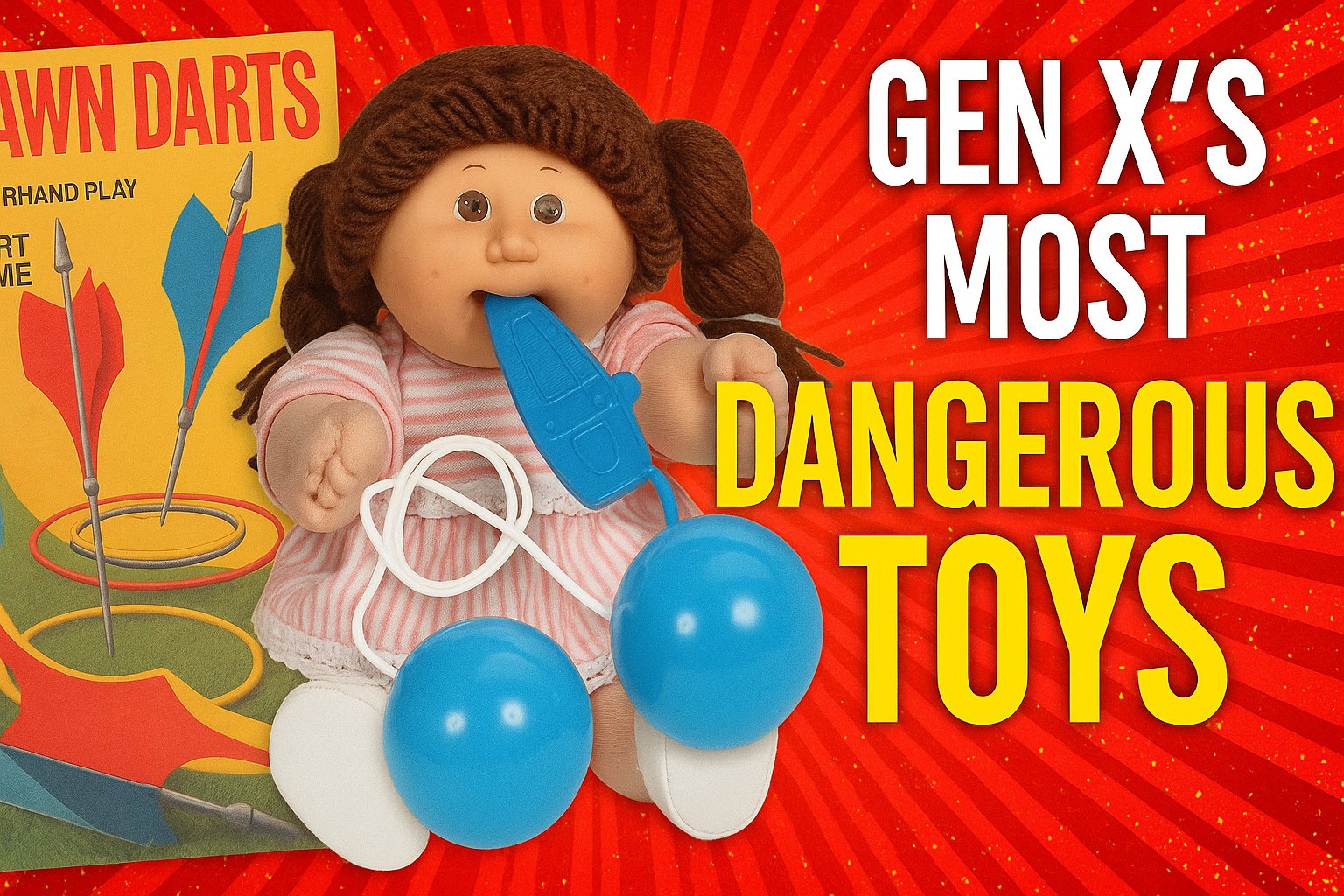If you’re a member of Generation X, chances are you grew up in a time when toys came with more sharp edges, heavy metal parts, and burn risks than modern power tools. Forget seatbelts and safety rails—we had lawn darts, clacking death spheres, and dolls with a taste for flesh. The 1970s and 1980s were a golden age of unregulated fun and low-key danger. And we loved every minute of it.
Here, we take a nostalgic (and slightly horrified) look back at five of the most dangerous toys from our childhoods. These weren’t just playthings—they were survival tests in plastic form. If you made it through with all your fingers, congratulations. You’re a Gen X legend.
1. Lawn Darts (aka Jarts)
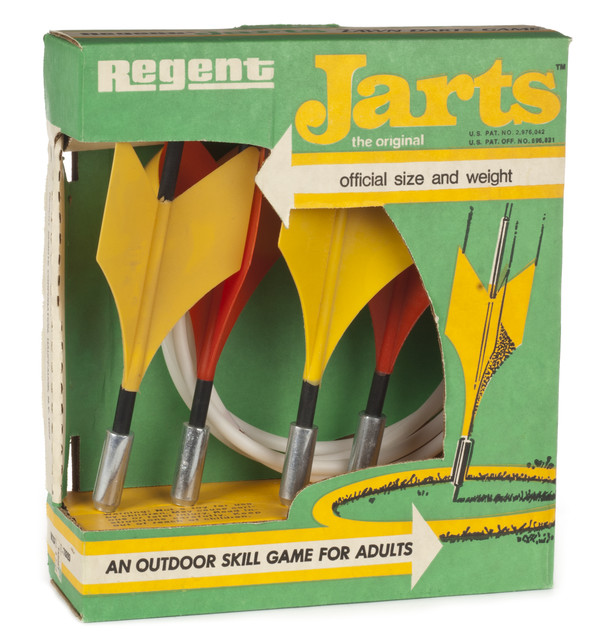
Let’s start with the most infamous offender: Lawn Darts. Also known by the brand name Jarts, these things looked like oversized darts with steel spikes on the end—because that’s exactly what they were. The idea was simple: throw them in the air and try to land them inside a plastic ring on the ground.
The execution? Not so simple. These lawn missiles could reach speeds of 40-50 mph on descent and were known to embed themselves several inches into soil. Tragically, they also embedded themselves into skulls and chests. In one heartbreaking case, a seven-year-old girl was killed when a dart struck her in the head. That incident, among others, led to public outcry and eventual action.
Why were they dangerous?
- Weighted metal tips turned them into weapons.
- Poor supervision meant kids were often the ones hurling them.
- Injuries ranged from bruises to fatal head trauma.
What happened? The U.S. Consumer Product Safety Commission (CPSC) reported over 6,000 emergency room visits due to lawn dart injuries. After years of debate, they were finally banned in 1988. Today, the only lawn darts you’ll find are safe, blunt-ended versions that resemble nothing like the original.
2. Snacktime Cabbage Patch Kids
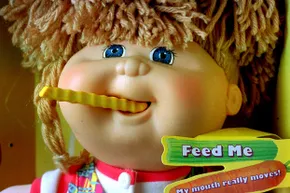
Cabbage Patch Kids were the must-have doll of the 1980s, but the Snacktime edition, released in 1996, introduced an unsettling twist: a motorized mouth that would “eat” plastic food accessories fed to it.
Adorable in theory. In reality? The doll had no off switch, no sensor to distinguish fake food from real fingers, and no way to reverse the motor. So when a kid’s long hair or tiny hand got caught, the doll didn’t stop.
Real examples:
- Children got their fingers caught in the doll’s mouth, requiring parental intervention and sometimes tools to pry them free.
- In some cases, the dolls ripped out clumps of hair, yanking it so close to the scalp that it required professional removal.
What happened? Mattel issued a voluntary recall in 1997 after receiving over 100 reports of injuries. Today, Snacktime dolls are collector’s items with a dark legacy—plastic proof that even sweet-faced toys can turn sinister.
3. Shrinky Dinks
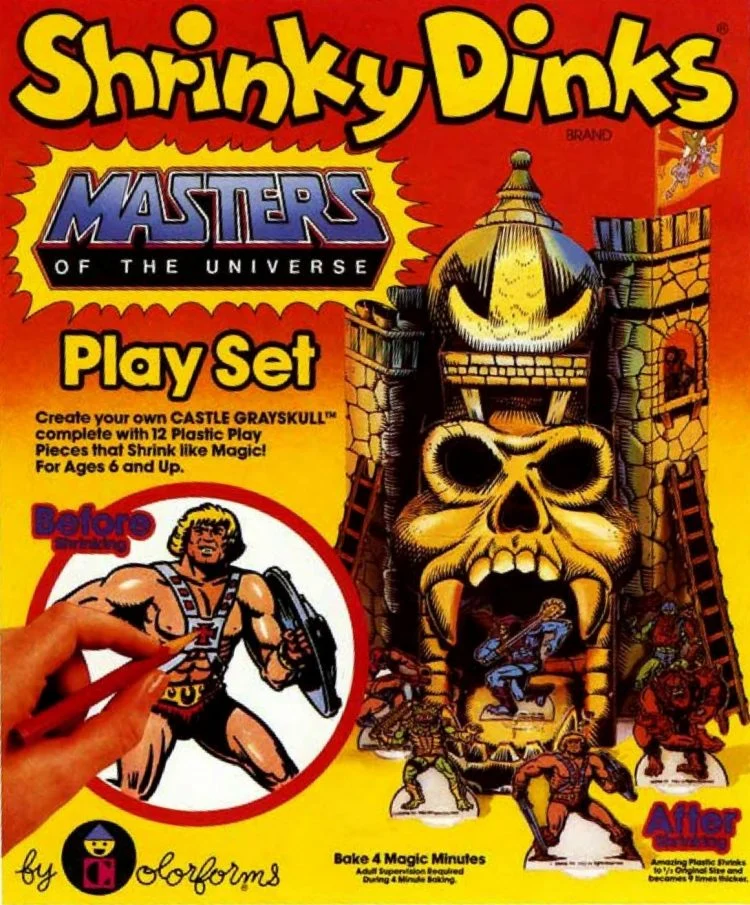
Shrinky Dinks were the DIY dream: plastic sheets you could draw on, cut out, and bake in the oven to shrink into mini charms or figures. What could go wrong?
Plenty.
The original Shrinky Dinks used polystyrene sheets, which released toxic fumes when heated. Kids were encouraged to put them in the oven, often without adult supervision. Combine that with the likelihood of touching a hot tray too soon or inhaling melting plastic, and you had a recipe for disaster.
Why they were dangerous:
- Toxic fumes from polystyrene.
- Risk of burn injuries from hot trays.
- Lack of adult supervision in many cases.
What happened? Modern versions of Shrinky Dinks use safer materials and come with clear warnings. But in the ’80s, the instructions were basically: “Throw this plastic in a 400-degree oven. Have fun!”
Watch my YouTube video on Gen X’s Most Dangerous Toys
4. Clackers
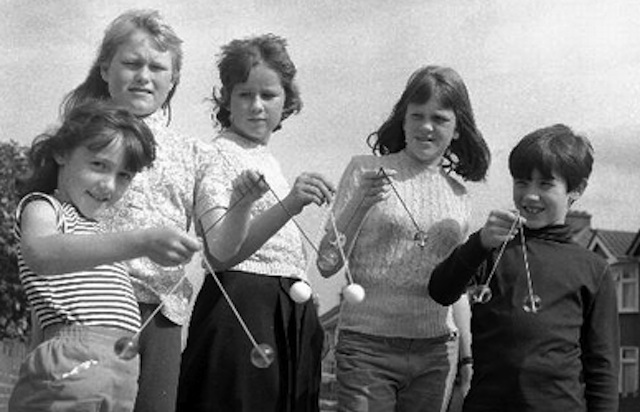
If you were a kid in the early 70s, chances are you had a set of Clackers. These were two heavy acrylic balls attached to either end of a string. You’d swing them up and down until they collided above and below your hand, making a rhythmic (and terrifying) clacking sound.
It was a game of coordination, but also a test of how much blunt force trauma your wrists could take.
Real dangers:
- Clackers would shatter under pressure, sending shards of hard plastic into eyes and faces.
- Repetitive use caused bruising, cuts, and even fractured bones.
Why they were dangerous:
- Made from brittle acrylic that could explode mid-clack.
- No protective eyewear or safeguards.
What happened? Clackers were eventually banned in the U.S. in the early ’70s due to widespread injuries. Some knockoff versions still exist today, but the originals? Gen X got the full-contact version.
5. Slip N Slide
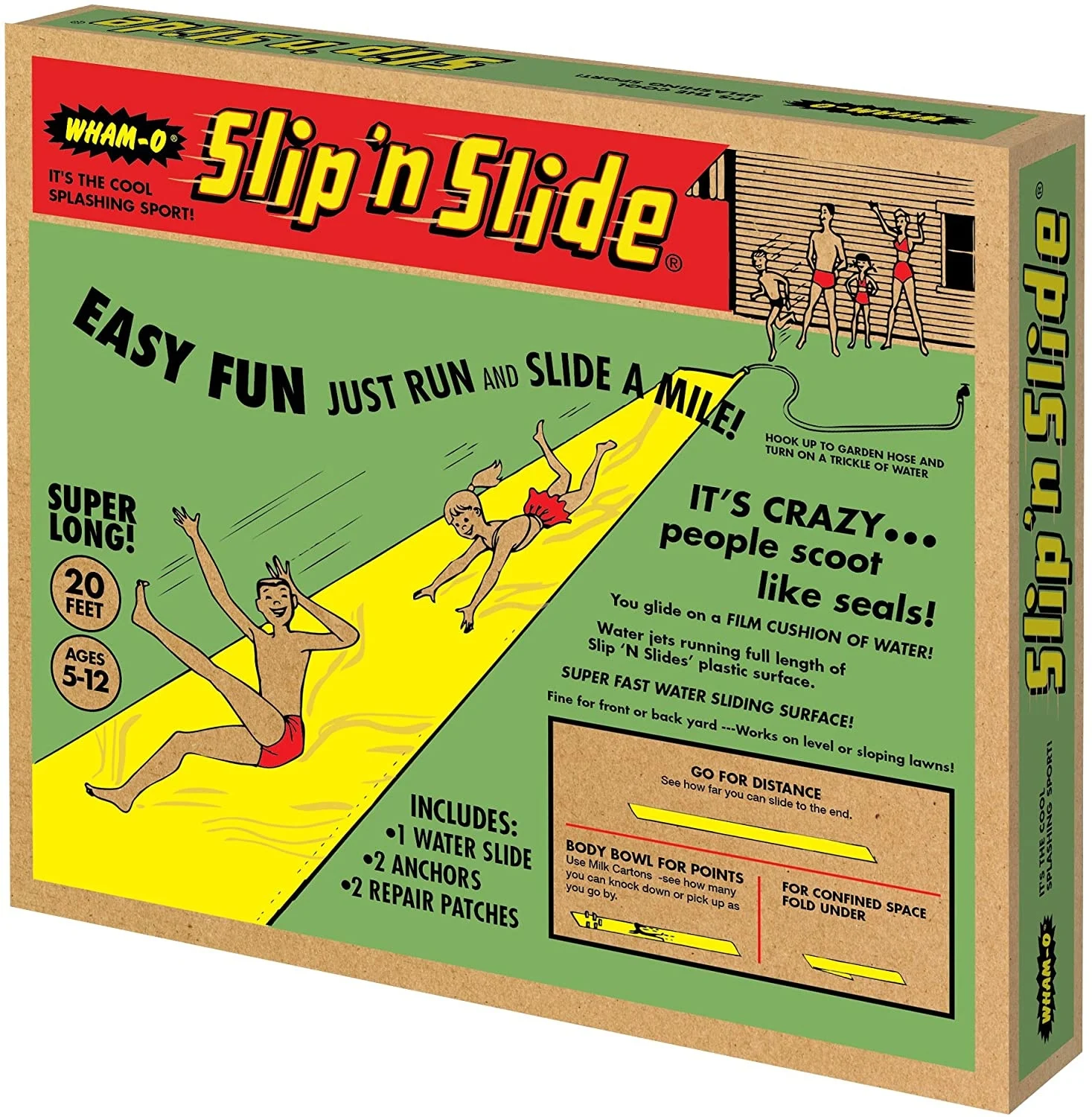
Summer wasn’t complete without a Slip N Slide — a long sheet of slick vinyl staked to your lawn, made slippery with hose water. The goal: run and dive across it like a human torpedo.
The problem? The ground underneath wasn’t always grass. Sometimes it was dirt, tree roots, or rocks. Add adult weight to that scenario, and suddenly you had catastrophic injuries.
Reported injuries included:
- Spinal cord injuries from diving too hard.
- Broken bones, concussions, and facial impact.
- Adults were especially at risk due to their higher speed and weight.
What happened? Wham-O had to settle lawsuits and the CPSC issued warnings that Slip N Slides were not intended for adults or teenagers. But that didn’t stop anyone back then. If you didn’t have a bruised hip and a grass rash by summer’s end, were you even trying?
Final Thoughts: Built Gen X Tough
It’s wild to think about the toys we grew up with. They were dangerous, sure. But they were also legendary. They taught us risk, resilience, and resourcefulness. Maybe we didn’t have helmets and hoverboards, but we had grit.
Gen X survived an era of toy-induced chaos with only mild trauma and a few stitches to show for it. And we wear those scars like a badge of honor.
Because let’s be honest—if you never got nailed by a rogue lawn dart or clacked yourself in the face, did you even grow up Gen X?
Stay nostalgic. Stay scarred. Stay Gen X.
